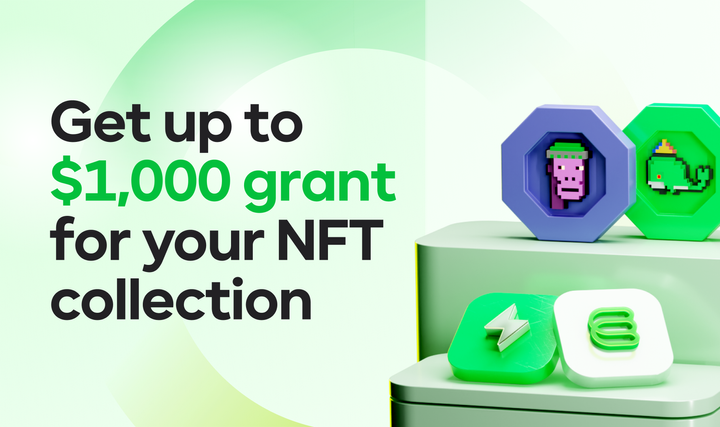DeFi Staking & why should you get involved in 2023?
Proof-of-Stake is a sustainable and energy-efficient consensus mechanism used in cryptocurrencies, where validators are selected based on their stake. By staking cryptocurrencies, investors earn passive income and incentivize more people to participate in validation, improving blockchain safety.

Proof-of-stake
The proof-of-stake (PoS) concept was introduced first in 2012. It intends to solve the problem of blockchains' high energy consumption, initially tackling Bitcoin's energy-intensive mining operations. It is a consensus mechanism used in different blockchains to validate transactions and maintain the integrity of the network. PoS is much more energy-efficient than proof-of-work (PoW) because it does not require large amounts of computing power to solve complex mathematical problems. The revolutionary aspect of proof-of-stake is that it offers a more sustainable and accessible alternative to PoW while maintaining the network's security. In a PoS system, validators - entities responsible for running nodes in the network - are chosen to validate transactions and create blocks based on the amount of cryptocurrency they hold and stake in the network.
Validators in a proof-of-stake system deposit a predetermined amount of cryptocurrency or tokens, which becomes their "stake", into a smart contract on the blockchain. This means that stakers with more coins have a higher probability of election to validate transactions and earn rewards. However, if they validate fraudulent data, they may be penalized with a partial or complete loss of their stake.

The proof-of-stake blockchains have a lower entry barrier for new participants who wish to capitalize on securing them. This consensus helps network decentralization unless the number of validator spots is limited. PoS has a higher potential to resolve the blockchain trilemma, which is the problem of finding a balance between security, decentralization, and scalability. Unfortunately, some blockchains sacrifice one of the three elements to increase speed and output. For example, they restrict validator places to achieve consensus faster, resulting in more transactions per second.
The first cryptocurrency implementing this consensus mechanism was Peercoin. Since then, proof-of-stake networks' market share has grown massively, creating new decentralized ecosystems. Examples include blockchains such as Solana, Cardano, Polygon, and recently Ethereum. Staking became a popular way to generate passive income. DeFi yield protocols and staking pools race to deliver new possibilities for users to utilize their cryptocurrencies and put them to work.
Staking
Staking is a fundamental feature of proof-of-stake consensus mechanisms. Validators deposit tokens to a network and lock them to participate in block generation. Each blockchain has its requirements regarding hardware specifications, minimum staking collateral (or maximum to increase decentralization), or unbonding periods. Sometimes validators must deposit substantially more tokens to get to the eligible validation set and receive rewards. It depends on the network. It can be the top 50, 100, or 1000 that take part in rewards distribution. Of course, there are blockchains with unlimited spots, such as Ethereum, where only the ETH supply restricts the number of validators. The network selects a node that verifies transactions and adds new blocks to the blockchain. In exchange, it receives a reward in the form of new tokens. Validators who validate transactions improperly or engage in cruel practices may lose some or all of their staked cryptocurrency as a penalty. This process is referred to as slashing. Every network provides rules which node operators must follow to avoid stake slashing.

Staking from the just token holder perspective is simpler. People who wish to stake their cryptocurrency must first choose a blockchain that uses a PoS consensus mechanism and supports staking. To facilitate it, they should look for delegated proof-of-stake (DPoS) networks where they do not have to bother setting up and running a node. Tokens need to be stored in a compatible wallet. To become stakers, holders delegate their assets to validators, increasing their total stake. This makes them more likely to create a block and receive rewards. Later they are distributed among all delegators based on their token share.
Let's take ETH staking process as an example. First, people must decide whether they are using DeFi or CeFi solutions. The elementary distinction is that in one, you are the owner of the assets, in the other, you are not. In CeFi, everything is pretty straightforward, people deposit cryptocurrency into a platform, click stake, and that is it. As for DeFi, there are two possibilities.
- The first is becoming a validator, meaning preparing hardware and running a node. To be a validator in the Ethereum network, stakers need to deposit 32 ETH. It is a noticeable investment, and not everyone will manage to provide an initial stake. DeFi yield protocols exist which lower the entry barrier, for example, to 16 ETH (Rocket Pool). More on staking derivatives later.
- The second option is to become a delegator and supply tokens to live validators. From here, the variety of solutions is mind-boggling. People can use the services of staking providers such as MyCointainer and participate in rewards for their nodes. The next option is to utilize protocols like Lido, Rocket Pool, or Frax Finance and benefit from liquid staking derivatives. Types of staking will be discussed later in the article.
Staking benefits
Staking cryptocurrencies offers several advantages to investors and network participants. One of the primary benefits of staking is the ability to earn yield. They vary and depend on the network, ranging from a few percent to +100% for the annual percentage rate (APR). These rewards are given to validators and delegators who help maintain the network and validate transactions accurately. It allows investors to earn passive income by holding their tokens in a wallet or smart contract. This can be a more stable and reliable income source than trading or mining. Staking can help improve the safety of a blockchain by encouraging more individuals to participate in the validation process. It helps reduce the risk of centralization and makes it more difficult for malicious actors to take control of the network. Last but not least, staking can involve voting rights and governance. Blockchains allow stakers to participate in the governance process by voting on proposals and decisions related to the network's development and future direction.

In DeFi, staking is essential to networks and protocols. Because decentralized finance relies on the trust and security of blockchains, staking helps provide that by incentivizing more individuals to participate in the validation process. In addition, staking can help stabilize the value of tokens used in DeFi protocols by reducing the circulating supply, which can help prevent price volatility. Staking works well in DeFi because it aligns the interests of investors and network participants with those of the network itself. Incentivizing users to hold and stake their tokens helps ensure the long-term health and stability of the network. It also encourages participation in governance, which can help promote transparency and community involvement in the development of the network. Staking in DeFi works because people believe in projects and are willing to bet their own money to secure them.
Staking types
Validator staking
This type of staking was already described in the article extensively. It is the most direct method to become a staker. People who decide on this path organize hardware and start running a node in the chosen network. They are rewarded based on their stake and do not have to share profits with delegators (unless they allow outside delegations and the selected blockchain supports DPoS). Node operators have to ensure constant connection to be online at all times. Their costs include electric power bills and hardware (buy or rent).

Delegated staking
It was previously mentioned as well. Individuals can delegate their cryptocurrency holdings to a validator or group of validators. They then use the acquired funds to stake on the network and earn yield. The delegator typically receives a portion of the rewards as a return on their investment. Delegated staking can be carried out on centralized and decentralized platforms. Cryptocurrency exchanges provide most of the CeFi solutions. People who store their assets on exchanges (although they should not) can access many staking opportunities for tens or hundreds of coins in one place. Those who wish to keep control of their funds can use DeFi and protocols suited to their needs. There are countless staking marketplaces, DeFi pools, and non-custodial staking platforms. Users can participate in staking on their favorite networks and preferred DeFi yield protocols.

Hot & cold staking
These are two methods of staking regarding the availability and custody of assets. Hot staking refers to staking tokens while they are still accessible on a device connected to the internet, such as a computer or mobile phone. It can also refer to staking performed on third-party custodial or non-custodial platforms such as exchanges and centralized yield providers. In hot staking, the staker's funds are not locked and can be transferred anytime. The advantages include the ability to move funds quickly and respond to changes in the market. However, the main disadvantage of hot staking is the increased risk of security breaches. Because staker's funds are online, they are vulnerable to hacking attempts and other malicious activity. Hot staking can be characterized as custodial and non-custodial. The first case alludes to cryptocurrency exchanges where assets are highly liquid and accessible, but the keys to users' funds belong to the platform. The second situation would be utilizing MetaMask or any other Web3 wallet and participating in DeFi staking pools.

On the other hand, cold staking refers to staking cryptocurrency stored in a wallet or device not connected to the internet, such as a hardware or paper wallet. The staker's funds are securely locked and cannot be accessed until they are removed from storage. The advantages of this method include improved security, reduced risk of hacking or theft, and the ability to stake safely for prolonged periods without interruption. However, the main disadvantage of cold staking is the lack of flexibility and the ability to move assets quickly. This method has become more popular after the events associated with FTX. Hardware wallets such as Ledger and Trezor are go-to devices for cold storage. More and more integrations and partnerships between projects and cold wallets allow for staking with increased security.
Locked staking
It is a feature of staking, hot or cold, where users can lock their assets for a certain period and receive additional rewards. Freezing funds provide increased yield. During the locking period, the tokens cannot be transferred or withdrawn. This helps to secure the network and provide stability to the staking ecosystem. Any earlier unlocks will usually result in forfeiting the rewards. The benefits of locked staking include higher yield, increased network security, and reduced price volatility of a crypto asset. The disadvantages are a lack of liquidity, trimmed flexibility, and potential risks of token value decrease during lock-up.

Liquid staking
The solution to the problem of locked staking. It resolves the troubles of the inaccessibility of assets. Liquid staking derivatives are a whole new market powered by ETH staking narrative. Users' cryptocurrencies can remain transferable and tradable while still generating rewards in DeFi yield protocols. Liquid staking is available in CeFi, Coinbase, Kraken, and Binance are the biggest players, and in DeFi where decentralized platforms such as Lido and Rocket Pool lead the ecosystem.
Read our previous article to learn more about liquid staking, DeFi derivatives, and other ways to earn crypto passive income.

Liquidity staking
Liquidity staking presents a reward-generating mechanism where users provide liquidity to a decentralized protocol, for example, decentralized exchange (DEX). It involves depositing cryptocurrency into a liquidity pool on a DEX or other DeFi protocol. The tokens are then used to provide liquidity for trading pairs on the platform. In exchange for their contributions, liquidity providers receive rewards in the form of new coins or a portion of the trading fees collected by the platform. Because decentralized exchanges are the blood of DeFi, liquidity provisioning is one of the most popular methods to earn passive income. It can get very profitable, especially on blockchain and protocols which just started operating and seek additional liquidity. Rewards can easily be double-digits.

The major problem of liquidity staking is impermanent loss. It is a potential risk associated with providing liquidity to a decentralized exchange (DEX) or automated market maker (AMM) protocol. It occurs when the price of the tokens in a liquidity pool changes in relation to each other after a user has deposited tokens into the pool. Pools usually work on a 50/50 or 80/20 basis. When people deposit assets into a liquidity pool, they receive liquidity provider (LP) tokens in return. They represent their share of the pool. The LP tokens can be redeemed for the underlying assets in the pool at any time. However, if the price of the tokens in the pool changes significantly while the LP tokens are held, the user may suffer an impermanent loss if they choose to redeem their coins. Impermanent loss is called "impermanent" because it only becomes permanent when a user withdraws tokens from the pool while the price is still unfavorable. If the price of cryptocurrencies in the pool returns to the original ratio, the impermanent loss will disappear.
Yield farming
It is a form of staking. Standard practice is earning rewards in the same token as deposited. However, in farming, users mostly get other cryptocurrencies than what they committed to a smart contract. Yield farmers may move their tokens between different protocols to maximize their returns and use advanced reward structures. Farming involves lending or staking cryptocurrency to generate the highest possible yield.

Conclusion
In conclusion, staking has emerged as a popular way for cryptocurrency holders to earn passive income while contributing to various blockchain networks' security and operation. With the rise of DeFi, staking has become an integral part of the ecosystem, allowing users to participate in governance, earn rewards, and provide liquidity to various protocols. The disruptive potential of staking and DeFi is immense, as they offer a more decentralized and accessible alternative to traditional finance. By removing the need for intermediaries and enabling anyone with an internet connection to participate, staking and DeFi have the potential to democratize access to financial services and disrupt traditional banking systems.
As the cryptocurrency and blockchain ecosystem continues to mature, the use cases for staking will expand. One potential future for staking is new decentralized applications that reward users for participating in various activities, such as content creation or data verification. Staking could also support the development of new blockchain networks, providing a more decentralized alternative to traditional fundraising methods. Overall, staking is an exciting development in DeFi, cryptocurrency, and blockchain technology, offering investors a way to earn passive income and participate in the ecosystem's growth.
About us

The Earn Network Marketplace is set to bring together multiple yield opportunities, including liquid staking, emphasizing and ensuring the liquidity and tradability of users' assets while not imposing restrictions on their funds. The focus of the Earn Network is centered around creating a marketplace for staking and lending, which is both centralized and decentralized. Its ultimate goal is to connect borrowers and liquidity providers, whether institutional or individual, by implementing a smart contract infrastructure linking capital globally. Keep an eye out for further developments!




